SWEDISH SOUTH ASIAN STUDIES NETWORK
| • New books connected
to South Asia research |
Recommended reading for South Asia
researchers and students, page 2 |
|
| • SASNET’s recommended newspapers available on the Internet • Articles recommended by SARID, the South Asia Research Institute for Policy and Development, USA. Covers the areas of Development; Technology; Governance; Education; Health sector; Conflict zone; Enterprise; Environment; and Religion. •
Guardian Unlimited, U.K. offers Special Reports pages
on India, Pakistan and Kashmir, with links to recommended articles
published in the Brittish quality paper The Guardian. • Asia Today. Top news stories from Times of India, The Hindu, BBC, Dawn etc. Service provided by The Asia Society. |
Go to Recommended reading, Page 1
Page 1
| Afghanistan | ||
| Bhutan | India | |
Page 2
| Nepal | Pakistan | Sri Lanka |
Maldives:
Well initiated articles about Maldives appear in every issue of Himal Southasian Magazine, published from Kathmandu, Nepal. The recent issue can be read right away on the web, but Himal Southasian also offers a comprehensive 20-year archive to its readers for FREE. It takes not more than a minute to register and get hold of the wide range of articles, art, cartoons, etc. that have featured in Himal over the years. Go for Himal Southasian Magazine ![]()
• Lessons In Dictatorship. Taimour Lay writes about President Gayoom and his admiration fro the Egyptian leader Hosni Mubarak. Gayoom spent most of the 1950's and 60's in the Middle East honing a reputation as an 'Islamic scholar'. But, amidst the tumult of Muslim Brotherhood activism, anti-British unrest and the Free Officers Movement of Gamal Abdel Nasser, it also provided the scene for his formative political experiences. Thirty years on, as he watches his Egyptian counterpart, Hosni Mubarak, continue his decades-long stranglehold on power, under pressure to reform both at home and abroad, the Middle East continues to teach Gayoom much more about the techniques of secular political control than it ever did about Islamic theology. Minivan News, 24 July 2006
• Towards full democracy. V.S. Sambandan reports on how the Maldives, on 3 June 2005, took a critical step in its path towards constitutional reform. The country’s parliament decided to open up the political system for the registration of the parties, pointing to a change in the ground rules for political engagement. Frontline 1 July 2005
• A cry for democracy. V.S. Sambandan on the 2004 crackdown on pro-democracy dissidents in the Maldives. This puts under peril the country's transition to full-fledged democracy, which will depend on the pace of reforms and the government's ability to convince its critics that it will deliver. Frontline 8 October 2004
• Government changes press law and cancels 22 publication permits. + news on ”Editors of an electronic newsletter sentenced to life in prison”. Asia Press Release from Reporters without Borders 15 April 2003.
Nepal:
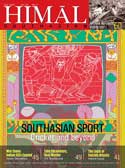 Well initiated articles about Nepal appear in every issue of Himal Southasian Magazine, published from Kathmandu, Nepal. The recent issue can be read right away on the web, but Himal Southasian also offers a comprehensive 20-year archive to its readers for FREE. It takes not more than a minute to register and get hold of the wide range of articles, art, cartoons, etc. that have featured in Himal over the years. Go for Himal Southasian Magazine
Well initiated articles about Nepal appear in every issue of Himal Southasian Magazine, published from Kathmandu, Nepal. The recent issue can be read right away on the web, but Himal Southasian also offers a comprehensive 20-year archive to its readers for FREE. It takes not more than a minute to register and get hold of the wide range of articles, art, cartoons, etc. that have featured in Himal over the years. Go for Himal Southasian Magazine ![]()
• Nepal’s Future: In Whose Hands? Nepal’s peace process is in danger of collapse. The fall of the Maoist-led government, a mess largely of the Maoists’ own making, was a symptom of the deeper malaise underlying the political settlement. Report by the International Crisis
Group, offering a thorough
evaluation of the current situation, including a chapter on the role of
India and China. Asia Report N°173,
13 August 2009.
• Nepal Rising. Assertion of popular will revives democracy. Cover stories in Frontline 19 May 2006. Articles by Siddharth Varadarajan (”The making of a democracy”, and also an interview with CPN (Maoist) leader Baburam Bhattarai); Kanak Mani Dixit (”For lasting peace”); and John Cherian (”Indian flip-flop”).
• Constitutional Developments and Protection of Human Rights. Dr. Manoj Kumar Sinha, Indian Society of International Law, on the human rights crisis in Nepal deepened by the imposition of an emergency in February 2005, which led to the suspension of many fundamental rights mentioned in the Constitution. Dr. Sinha was a guest researcher at Raoul Wallenberg Institute of Human Rights and Humanitarian Law at Lund University in 2005. Indian Journal of International Law, vol. 45, no 4, 2006.
• Armed Conflict and Migration: A threat for development and peace. A case of Nepal. Research paper by Keshab Prasad Bhattarai, Centre for East and South East Asian Studies, Lund University. The paper presents an argument on; what is the ground for the present armed conflict in Nepal and why has it been a problem though the history of the conflict is not that longer compared to other armed conflicts around the world? Nepal Research February 2006
• Caste Discrimination Root Cause of Conflict in Nepal. Report by the Center for Human Rights and Global Justice, New York University School of Law (led by Project Director Smita Narula), on the Nepalese civil war’s impact on Dalits. The report, released on 11 August 2005 in Geneva (during the two-week meeting of the U.N. Sub-Commission on the Promotion and Protection of Human Rights) deals with how the Maoists have capitalized on caste and gender discrimination in Nepal by heavily recruiting Dalits and women for their “people’s militia, and how Maoist indoctrination often includes a special emphasis on the oppression of the “lower castes,” and the Maoists’ alleged role in liberating them.
• The 'People's War'. Essay by Indian journalist Pankaj Mishra. London Review of Books 23 june 2005.
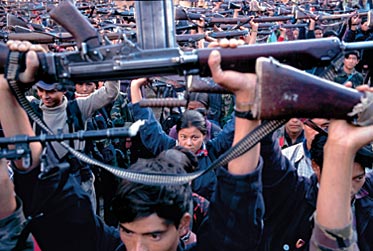 •
Gunning for Nepal. TIME Asia 18 April 2005 special cover
report on the bloody civil war that is tearing the Himalayan kingdom apart.
Main text by Alex Parry. Also an interview with the Maoist leader
Prachanda – ”We
Are Trying to Crush Feudal Autocracy”.
•
Gunning for Nepal. TIME Asia 18 April 2005 special cover
report on the bloody civil war that is tearing the Himalayan kingdom apart.
Main text by Alex Parry. Also an interview with the Maoist leader
Prachanda – ”We
Are Trying to Crush Feudal Autocracy”.
• A Kingdom in Chaos. As Nepal slips toward anarchy, its embattled King Gyanendra speaks about his efforts to restore order to Alex Perry from TIME Asia magazine 26 January 2004.
• Nepal Backgrounder: Ceasefire – Soft Landing or Strategic Pause? Report by the International Crisis Group (ICG), dated 10 April 2003, on the fragile ceasefire which was reached between the Communist Party of Nepal (Maoist) and government forces in January 2003 and has, for now, stopped the bloodshed.
• Heading for a Showdown in Nepal. Bertil Lintner has visited the maoist held areas of the country, and interviewed Comrade Prachanda. Far Eastern Economic Review, 24 October, 2002.
• Nepal's Maoists prepare for final offensive. A more extensive article by Bertil Lintner on the same issue, in Jane’s Intelligence Review October 2002.
Pakistan
Well initiated articles about Pakistan appear in every issue of Himal Southasian Magazine, published from Kathmandu, Nepal. The recent issue can be read right away on the web, but Himal Southasian also offers a comprehensive 20-year archive to its readers for FREE. It takes not more than a minute to register and get hold of the wide range of articles, art, cartoons, etc. that have featured in Himal over the years. Go for Himal Southasian Magazine ![]()
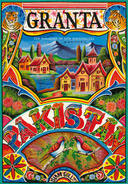 Granta Magazine, published at University of Cambridge, UK, has presented a special theme issue (No. 112, Autumn 2010) on Pakistan. High quality articles/texts by John Siddique,
Saadat Hasan Manto,
Caco Neves, Uzma Aslam Khan, Aamer Hussein, Nadeem Aslam, Azhar Abidi, and Bina Shah are all available on the web. Go for Granta Magazine No. 112.
Granta Magazine, published at University of Cambridge, UK, has presented a special theme issue (No. 112, Autumn 2010) on Pakistan. High quality articles/texts by John Siddique,
Saadat Hasan Manto,
Caco Neves, Uzma Aslam Khan, Aamer Hussein, Nadeem Aslam, Azhar Abidi, and Bina Shah are all available on the web. Go for Granta Magazine No. 112. ![]()
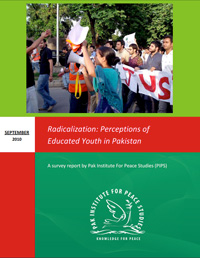 • Radicalization: Perceptions of
Educated Youth in Pakistan.
A survey report by Pak Institute For Peace Studies (PIPS), September 2010. Pakistan had 113 mainstream universities and 1,371 degree colleges in the country in 2007, where 424,271 and 324,988 students were enrolled, respectively. The research design based on an extensive field study uses a questionnaire to elicit the views of educated youth from both rural and urban backgrounds on radicalisation. The findings are most interesting and illuminating. The respondents overwhelmingly considered religion an important factor in their life (92.4 percent), though 51.7 percent said that they do not offer prayers regularly. More than half (55.8 percent) insisted that religious values were critical to Pakistan’s progress.
• Radicalization: Perceptions of
Educated Youth in Pakistan.
A survey report by Pak Institute For Peace Studies (PIPS), September 2010. Pakistan had 113 mainstream universities and 1,371 degree colleges in the country in 2007, where 424,271 and 324,988 students were enrolled, respectively. The research design based on an extensive field study uses a questionnaire to elicit the views of educated youth from both rural and urban backgrounds on radicalisation. The findings are most interesting and illuminating. The respondents overwhelmingly considered religion an important factor in their life (92.4 percent), though 51.7 percent said that they do not offer prayers regularly. More than half (55.8 percent) insisted that religious values were critical to Pakistan’s progress.
– Read also Prof. Ishtiaq Ahmed’s comments on the study in an article entitled ”Radicalisation of educated Pakistani youth” published in Dawn on 26 October 2010. ![]()
• Abdul Ghaffar Khan, Islam and non-violence. Ishtiaq Ahmed, Visiting Research Professor at the Institute of South Asian Studies (ISAS) and the South Asian Studies Programme at the National University of Singapore (and Professor of Political Science at Stockholm University), on the fact that Abdul Ghaffar Khan was a man of peace. He approached Islam in the hope of finding a complementary message to Gandhi’s interpretation of Hinduism as Ram Raj and ahimsa (non-violence) and he found it. A question that keeps popping up in discussions on violence, terrorism and the Taliban is the following: is the use of force and violence intrinsic to Pakhtun culture? Superficially it seems that it must be so because the Pakhtuns have been bearing firearms since a long time. They were producing firearms much before the Afghan jihad started. Many invasions of India were launched from the north-western mountain passes by the Afghans belonging to Pakhtun tribes and clans. Therefore, in popular memory a proclivity towards violence has been associated with the Pakhtuns. This, however, is a myth derived from an essentialist understanding of any culture. Against such ‘evidence’ is the fact that apart from the mass civil disobedience movement that Mahatma Gandhi started from 1919 onwards, the most organised movement of peaceful resistance to colonial rule was put forth by the Pakhtun leader Abdul Ghaffar Khan (1890-1988) and his Khudai Khidmatgars or Red Shirts. Daily Times 26 January 2010.
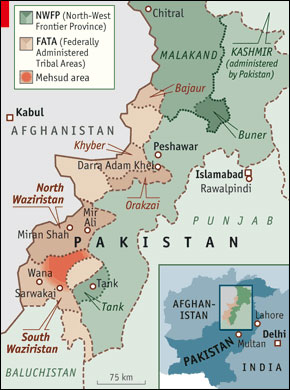 • Waziristan –
The last frontier. Waziristan, home to 800,000 tribal Pushtuns, is a complicated place. It is the hinge that joins Pakistan and Afghanistan, geographically and strategically. Split into two administrative units, North and South Waziristan, it is largely run by the Taliban, with foreign jihadists among them. If Islamist terror has a headquarters, it is probably Waziristan. Now the Pakistani government is making a determined effort to control the place. The Economist, 30 December 2009.
• Waziristan –
The last frontier. Waziristan, home to 800,000 tribal Pushtuns, is a complicated place. It is the hinge that joins Pakistan and Afghanistan, geographically and strategically. Split into two administrative units, North and South Waziristan, it is largely run by the Taliban, with foreign jihadists among them. If Islamist terror has a headquarters, it is probably Waziristan. Now the Pakistani government is making a determined effort to control the place. The Economist, 30 December 2009.
• A tragedy of errors and Cover-ups. The IDPs and outcome of military actions in FATA and Malakand Division, by Asma Jehangir, chairperson, Human Rights Commission of Pakistan (HRCP). Based on reports by HRCP activists in the Malakand Division and other parts of NWFP/Pakhtunkhwa, visits to IDP camps by its activists and senior board members, and talks with many displaced people and several Nazims and public figures, the commission has released its statement on the situation, its conclusions and recommendations. HRCP Report 5 June 2009.
• The mind of Pakistan’s jihad. Praveen Swami on the need for Pakistan to dismantle not only the infrastructure of terror but also the ideas that built it in the first place. He tells how the Jihadi ideologues of Pakistan have now gone even beyond their original inspiration, the founder-ideologue of Jamaat-e-Islami, Maulana Abul Ala Maudoodi. The Maulana had clarified several times that Jihad cannot be fought by individuals or groups: it can only be fought by an Islamic state which will first have to sever all diplomatic, trade and other ties with the country and declare that it was going to engage in Jihad. In Islamic tradition Jihad – in the sense of Qital that is the Jihad that involves killing – cannot be fought surreptitiously. He had specifically denounced the so-called Kashmir Jihad of 1948 as un-Islamic for this reason. The Hindu 20 March 2009.
• The victory: myth, reality and the future. Dr. Nasim Zehra, Islamabad-based security analyst (photo to the right) on how the Pakistani government took a U-turn and finally conceded to the demand of the Long Marchers. New beginnings in Pakistan's politics and exercise of Executive and State authority are evident. The first-ever people's struggle for the accountability of the exercise of Executive authority, as laid out in the Constitution, succeeded. Dawn 18 March 2009
• Towards theocracy? State and society in Pakistan today. Prof. Pervez Hoodbhoy on the the forces of irrationality that seem to rule Pakistan. For 20 years or more, a few people in the country have been desperately sending out SOS messages, warning of terrible times to come. Nevertheless, none anticipated how quickly and accurately our dire predictions would come true. It is a small matter that the flames of terrorism set Mumbai on fire and, more recently, destroyed Pakistan’s cricketing future. A much more important and brutal fight lies ahead as Pakistan, a nation of 175 million, struggles for its very survival. The implications for the future of South Asia are enormous. Frontline 14 March 2009.
• Gender, Religion and the Quest for Justice in Pakistan. Draft paper by Farida Shaheed in UNRISD’s country case study on in the ”Religion, Politics and Gender Equality” project. She explores how Islam transformed from the religious identity of Pakistan’s majority population to the central defining parametre for state and society. This privileging of religion as the yardstick for all activities from politics to judicial structures, from entertainment to women’s rights, has undermined women’s already weak position in society and seriously challenges the quest for gender equality. The paper argues that the disempowerment of women has been the outcome, not the purpose, of ‘Islamization’ projects which have been executed in the pursuit of greater power alignments. UNRISD (United Nations Research Institute for Social Development) 12 February 2009.
• Second FATA Workshop of the World Security Network (WSN). Conference reports from a high-profile conference on FATA, the Federally Administered Tribal Areas in Pakistan, held in in collaboration with the UK Royal College of Defense Studies (RCDS) in London on 19 February 2009. WSN is a global elite network organisation for foreign and security policy. More than one hundred experts from all over the world discussed how to improve the situation in this strategically important region in Pakistan. The report includes articles by Ali Aurakzai, Former Governor of Northwest Frontier Province (NWFP), Riaz Khokhar, former Foreign Secretary of the Islamic Republic of Pakistan; and Dr. Humayan Khan, former Foreign Secretary and High Commissioner of Pakistan in London. World Security Network website.
• Swat. A Critical Analysis. Sultan-i-Rome on how Swat is now at the crossroads. If both the Pakistani government and the Taliban remain adamant and refuse to budge from their stated stances and preconditions; it is likely to spell ruin for Swat and its inhabitants. January 2009 report published by Institute of Peace and Conflict Studies, New Delhi.
• International Institute for Asian Studies (IIAS) Newsletter No. 49/Fall 2008, special section on Pakistan:
– Crises of governance – Imran Ali
– Pakistan, an abundance of problems and scant knowledge – Kristoffel Lieten
– Lords of a Dubai labour camp: Pakistani migrants in the Gulf – Magnus Marsden
– The quiet evolution: Islam and women's rights in Pakistan – Martin Lau
– Primary education, lagging behind – Afke de Groot & Kristoffel Lieten
– Violence and love: the mobilisation of Karachi's Mohajir youth – Nichola Khan
• The next chapter. The United States and Pakistan. September 2008 Report by the Pakistan Policy Working Group (PPWG), a bipartisan group of American experts on US-Pakistan relations, formed in January 2008. The members include Walter Andersen from the Paul H. Nitze School of Advanced International Studoes, Johns Hopkins University; and Stephen P. Cohen, The Brookings Institution.
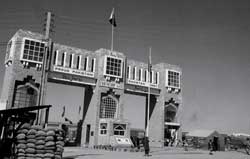 • Pakistan’s Phantom Border. Web Exclusive by Janine di Giovanni.
Going where few Westerners dare – from Taliban strongholds to undercover-police headquarters – the author sees what’s currently tearing Pakistan apart. Vanity Fair Magazine, 10
June 2008
• Pakistan’s Phantom Border. Web Exclusive by Janine di Giovanni.
Going where few Westerners dare – from Taliban strongholds to undercover-police headquarters – the author sees what’s currently tearing Pakistan apart. Vanity Fair Magazine, 10
June 2008
• Freedom of British India through the Lens of the Khaskar Movement. Nasim Yousaf examines the role of Allama Mashraqi and his Khaksar Movement in the freedom of British India. The topic has thus far been largely ignored by historians in India and Pakistan and therefore offers a fresh lens with which to analyze the liberation of the Indian nation from British rule in 1947. Allama Mashraqi website 2008.
• Pakistan reborn? William Dalrymple has tored Pakistan after the February 2008 elections.
Confounding all predictions, he concludes that the Pakistani people have clearly demonstrated that they want to choose their own rulers and decide their own future. There is a consensus from Lahore to Karachi. New Statesman 21 February 2008.
AND • On The Long Road To Freedom. William Dalrymple again, writing about how finally Pakistan’s emerging middle class begins to stand up to the army, the ‘feudals’ and the fundamentalists in an attempt to shape a democratic future. Tehelka Magazine 8 March 2008.
• Pakistan's Simmering Unrest. Article by Matthew Hennessey on how, since taking power in a 1999 military coup, Pakistani President Pervez Musharraf has struggled with the same question as his predecessors: How to keep a tangled patchwork of provinces from breaking apart? Carnegie Council Policy Innovations Briefings 9 January 2008.
• After Bhutto's Murder: A Way Forward for Pakistan. Report by the Brussels-based International Crisis Group (ICG) on the situation in the country after the assassination of the Pakistan Peoples Party (PPP) leader Benazir Bhutto. Her killing has thrown the country deeper into political crisis only days before parliamentary elections scheduled for 8 January 2008. It has unleashed a wave of anger that has seen some 60 killed across the country, and put an end to the U.S. effort to broker a power-sharing deal between the centre-left PPP and President Pervez Musharraf. ICG Asia Briefing N°74, 2 January 2008
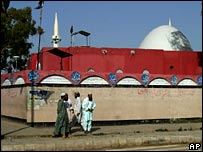 •
Lessons from the Lal Masjid tragedy. Robert
Jensen, journalism
professor at the University of Texas at Austin and board member of the
Third Coast Activist Resource
Center, visited Islamabad right at the time of the mosque storming,
and met Farid Esack and Junaid Ahmad. commondreams.org
News Center 12
July 2007.
•
Lessons from the Lal Masjid tragedy. Robert
Jensen, journalism
professor at the University of Texas at Austin and board member of the
Third Coast Activist Resource
Center, visited Islamabad right at the time of the mosque storming,
and met Farid Esack and Junaid Ahmad. commondreams.org
News Center 12
July 2007.
• Dispatches from the Frontlines of the Burqa Brigade. What Lies Beneath. Dr. Fawzia Afzal-Khan, Professor in the Department of English at Montclair State University in New Jersey, reports from a visit to the Lal Masjid and adjoining Jamia Hafsa seminary for women in Islamabad. Counterpunch 7-8 July 2007.
• Mobilisation and Political Violence in the Mohajir Community of Karachi. Paper by Nichola Khan, post graduate student at the University of Sussex, UK (doing research on violence in a South Asian context), about the the Muttahida Quami Movement and its engagement in a conflict in Karachi involving high levels of violence with other ethnic groups, rival factions and the state. Economic and Political Weekly, 23 June 2007.
• Pearl slaying in Pakistan unresolved. Laura King writes about Karachi, the city that swallowed up Daniel Pearl, and a sense of menace still hangs as heavy as the sultry air. A high-profile new film has focused renewed attention on the case of the Wall Street Journal reporter who was kidnapped and executed by Islamic insurgents here in 2002, and has underscored the fact that many questions remain unanswered. Los Angeles Times, 16 June 2007.
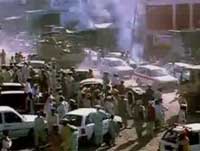
• Between the Mullahs and the Military. Documentary film by Brittish-Pakistani author and journalist Ziauddin Sardar travelling back to his homeland to explore how Pakistan has become engulfed in a bitter conflict between the two dominant forces in the country – the military and the mullahs. Between them, these two powerful voices have shaped the identity of the country. They co-existed alongside each other and formed a successful alliance during the Afghan war against the Soviet Union. But the turning point arrived with 9/11 and President Musharraf's subsequent pledge to support the West and America. Channel 4, 23 April 2007 (shown at Youtube).
• The terrorist within. Ishtiaq Ahmed, Dept. of Political Science, Stockholm University, writes about how during a short time terrorism has acquired proportions that must begin to be unbearable for Pakistanis. A doctor shot dead for bringing the polio vaccine to remote rural areas in the NWFP, a woman minister shot dead at point blank range by a fanatic for allegedly not wearing proper Islamic dress (whatever it means) and then potential suicide bombers blown to smithereens in Chichawatni by the same device they were carrying on a bike to strike some target: and one wonders who is no longer on the hit lists. The News International 12 March 2007.
• GCC Investments in Pakistan and Future Trends. Faryal Leghari, Researcher in the Security and Terrorism Program at the Gulf Research Center in Dubai, on how due to wide-ranging structural economic reforms that were introduced six years ago, Pakistan has exhibited a rapid, strong and sustained economic recovery. This has resulted in a stable economic growth rate of 6.6 percent for the fiscal year2005-06. Gulf-Asia Research Bulletin, 26 January 2007.
• Waiting for Enlightenment. Pervez Hoodbhoy analyses Pervez Musharraf’s call for “enlightened moderation”, and sees it aa atacit (and welcome) admission that a theocratic Pakistan cannot work. At the heart of Pakistan’s problems lies a truth that when a state proclaims a religious identity and mission, it is bound to privilege those who organise religious life and interpret religious text. Economic and Political Weekly, Mumbai & Friday Times, Lahore 21/22 July 2006
• Final Settlement: Restructuring India-Pakistan Relations. Executive summary of a study by the Mumbai-based think tank Strategic Foresight Group in September 2005. It covers India-Pakistan relations in three sections: Fire, Water and Earth, and claims to expose “many dimensions of the bilateral relations hitherto unspoken” and to unravel “layers of sub-continental mind sets to reveal the core.
• Iqbal, Jinnah and Pakistan: The Vision and the Reality. Sharp analysis by C M Naik, former Professor at the Dept. of South Asian Languages and Civilizations, University of Chicago. Ambiguities of Heritage 1999.
• Inside the Madrasas. William Dalrymple on a journey he made visiting madrasa institutions in Pakistan. New York Review of Books 1 December 2005.

• In the aftermath of the earthquake. Ishtiaq Ahmed, Dept. of Political Science, Stockholm University, on the tragedy of Kashmir, showing that death and destruction caused by nature does not distinguish between Muslim and non-Muslim. It is only logical that national calamities can be confronted if we stand united, especially those who are affected. Daily Times 25 October 2005.
• Death ruled the beautiful mountains. Hamid Mir on the Kashmir earthquake on 8 October. Rediff Special 16 October 2005
• Shazia Khalid and the fight for justice in Pakistan. Shazia Khalid, staying in UK, talks about the challenges facing Pakistani women in achieving equal rights and justice, following her own rape and attempts by the government to silence her. Open Democracy 26 September 2005.
• An infrastructure of hope. Pervez Hoodbhoy on the fact that Pakistan's options have run out. Not just because Pakistan is militarily incapable of wresting Kashmir from Indian rule, but also becaise its assumption that keeping the world focused on Kashmir was good, has turned out to be a miscalculation. In fact, once the world fully understood, the reaction was not at all what Pakistan had in mind. Daily Times 22 April 2005.
• Religion column and enlightened moderation. Ishtiaq Ahmed on when and how the Muslim world in general and Pakistan in particular will free itself from the medieval mindset that interprets Islam only as a discriminatory and repressive political ideology is difficult to guess. It will undoubtedly necessitate a confrontation between the forces of reaction and the forces of progress. Daily Times 5 April 2005.
• Inside Islam's ”terror schools”. Cover story from Pakistan by William Dalrymple, on the madrasa school system, accused by the US of incubating terrorism and the attacks of 9/11. In neighbouring India he finds a madrasa system that has effectively tackled both the problems of militancy and of educational backwardness. New Statesman 28 March 2005.
• The myth of history. Prof Shahida Kazi on mythology overtaking the study of history in Pakistan. Many a fabricated tale has become part of the Pakistani collective consciousness. Does mythology have anything to do with history? Is mythology synonymous with history? Or is history mythology? Dawn 27 March 2005.
• In Ayub’s Footsteps. Ahmad Faruqui, economist and author of ”Rethinking the National Security of Pakistan”, on the fact that even though Ayub Khan has been dead for 30 years, his personality still casts a long shadow over events in Pakistan. Five years into his rule, General Pervez Musharraf can be seen closely following in the footsteps of the Field Marshal. Daily Times 12 October 2004.
• No to extremist Islam. Ishtiaq Ahmed on the urgency to reject extremist, politicised Islam and the terrorism associated with it, after recent sectarian massacres committed in Pakistan. A reformation which retains the eternal message of compassion and humility that the Prophet (PBUH) practised in Mecca is needed. Daily Times 12 October 2004.
• Devolution in Pakistan: Reform or Regression? Asia Report N°77 by International Crisis Group, ICG, published 22 March 2004 . The political devolution introduced in 2000 has undercut established political parties and drained power away from the provinces while doing little to minimise corruption or establish clear accountability at a local level.
• Is Pakistan's nuclear programme dying? Analysis by Paul Anderson, BBC correspondent in Islamabad. BBC News World Edition 3 March 2004.
• The Nuclear Noose Around Pakistan's Neck. Pervez Hoodbhoy, professor of nuclear physics at Quaid-e-Azam University in Islamabad, on the Pakistani nuclear programme after Dr. A.Q. Khan, Pakistan's most celebrated bomb maker and a national hero, was fired on 31 January 2004 from his job as science adviser to Pakistan's prime minister. Washington Post 1 February 2004.
• The house that Jinnah built. Abdul Ghafoor Noorani presents the relationship between two of the main protagonists of the Partition Drama, Jinnah and Nehru, after the partition had taken place. It shows that Jinnah had no intention of giving up his roots in Mumbai and elsewhere where he owned property. Article based on the latest volume of Jinnah Papers published by Oxford University Press, Karachi (Pakistan – Struggling for Survival, 1 January –30 September 1948, Editor-in-Chief Z.H. Zaidi). Frontline 7 November 2003.
• Musharraf’s elusive ‘no-win’ scenario. Ahmad Faruqui argues for peace with India, as given the discrepancies in population and GDP between the two countries, and the faster growth rate of the IT-driven Indian economy, Pakistan is no position to match India militarily. Daily Times 28 October 2003.
• Pakistan’s emergence. Ishtiaq Ahmed on different theories about the country’s birth, and how the poor in Pakistan have remained poor and crushed. An appeal that it is time their aspiration to a better life is given serious consideration. Daily Times 26 October 2003.
• Pakistan: The Mullahs and the Military. Report by the International Crisis Group (ICG), on the resurgence of the religious parties in the October 2002 elections. Acording to the report this portends ill for Pakistan's political, cultural and social stability.
• Punjabis and their identity. Ishtiaq Ahmed, Dept of Political Science, Stockholm University, on the Punjabiyat, threatened by communalism on the Indian side of teh border, and of self-denial on the Pakistani side. Daily Times 25 February 2003.
• Pak-US-North Korea relations. Pakistan slammed again. New revelations in a CIA report that Pakistan started paying for missile systems from North Korea in 1997 by sharing its nuclear technology with the latter. Article by Seymour M Hersh in the New Yorker, reprinted in Daily Times, Lahore, 27 January 2003.
• ”Vajpayee Is Taking A General's Approach”. Exclusive interview on India-Pakistan relations with the Pakistani Prime Minister Mir Zafarullah Khan Jamali, by Mariana Baabar. Outlook 30 December 2002.
• Social Forces and Ideology in the Making of Pakistan. Prof Hamza Alavi, renowned Pakistani sociologist and political historian. A Prof. Karrar Memorial Lecture, 2 November, 2002 in Karachi. Prof. Alavi has elaborated his thesis on the Pakistan Movement: that it was a secular movement and not anything else. He especially dismisses that it had any fundamentalist content or aspect (Istiaq Ahmed).
• The fundamentalist dimension in the Pakistan Movement. Critical commentary on Prof Hamza Alavi’s lecture, by Ishtiaq Ahmed. Friday Times 22 November, 2002.
• Pakistan Poverty Assessment Poverty in Pakistan: Vulnerabilities, Social Gaps, and Rural Dynamics. Report by World Bank Group.
• Hotel Moenjodaro, on a visionary story by Ghulam Abbas. Chronicle by Khalid Hasan in Friday Times, 1 November, 2002. Abbas already in 1967 foresaw the rise of fundamentalist Islam in Pakistan.
• Pakistan on the Edge. Ahmed Rashid, New York Review of Books, 10 October 2002. Article on contemporary Pakistani politics by Rashid, best known for his book ”Taliban: Islam, Oil and the New Great Game in Central Asia” (Pamela Price). Reviews two new books – ”Pakistan: The Eye of the Storm”, by Owen Bennett Jones; and ”Pakistan: In the Shadow of Jihad and Afghanistan”, by Mary Anne Weaver.
• Globalisation and Human Rights in Pakistan. Ishtiaq Ahmed, Stockholm university. Article from International Journal of Punjab Studies 1/02 (January-June 2002)
Sri Lanka:
Well initiated articles about Sri Lanka appear in every issue of Himal Southasian Magazine, published from Kathmandu, Nepal. The recent issue can be read right away on the web, but Himal Southasian also offers a comprehensive 20-year archive to its readers for FREE. It takes not more than a minute to register and get hold of the wide range of articles, art, cartoons, etc. that have featured in Himal over the years. Go for Himal Southasian Magazine ![]()
• Sri Lanka. Challenges Ahead. N. Manoharan, Center for Land and Warfare Studies (CLAWS), New Delhi, on the what will come after the military defeat of the the Liberation Tigers of Tamil Eelam (LTTE), that have been cornered to small pockets of Mullaithivu district. In 2006, when the ‘open confrontation’ broke out in the island, the Tigers were in control of over 15,000 square kilometres comprising districts of Kilinochchi, Mullaithivu, Mannar and parts of Vavuniya, Jaffna, Trincomalee and Batticaloa, virtually running a proto-state. IPCS (Institute of Peace and Conflict Studies) Issue Brief, February 2009.
• Origin of the Conflict in Sri Lanka and Sinhala Ethnic Nationalism. Paper by Professor Chelvadurai Manogaran, late Professor of Geography and International Studies at the University of Wisconsin – Parkside, USA, from the Proceedings of International Conference On Tamil Nationhood & Search for Peace in Sri Lanka, held in Ottawa, Canada 1999. Tamilcanadian.com.
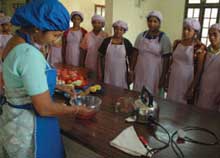 •
Exported and Exposed.
Abuses against Sri Lankan Domestic Workers in Saudi Arabia,
Kuwait, Lebanon, and the United Arab Emirates. Human Rights Watch report documenting the serious abuses that domestic workers face at every step of the migration process. It also shows how the Sri Lankan government and governments in the Middle East fail to protect these women. The report is based on 170 interviews with domestic workers, government officials, and labor recruiters conducted in Sri Lanka and in the Middle East. 14 November 2007.
•
Exported and Exposed.
Abuses against Sri Lankan Domestic Workers in Saudi Arabia,
Kuwait, Lebanon, and the United Arab Emirates. Human Rights Watch report documenting the serious abuses that domestic workers face at every step of the migration process. It also shows how the Sri Lankan government and governments in the Middle East fail to protect these women. The report is based on 170 interviews with domestic workers, government officials, and labor recruiters conducted in Sri Lanka and in the Middle East. 14 November 2007.
• Sri Lanka's Human Rights Crisis - Asia Report No.135 dated 14 June 2007, Produced by the International Crisis Group (ICG) based in Brussels, Belgium. It examines abuses committed by both the Sri Lankan government and the Liberation Tigers of Tamil Eelam (LTTE) since they resumed their war in 2006. While the LTTE has continued its deliberately provocative attacks on the military and Sinhalese civilians as well as its violent repression of Tamil dissenters and forced recruitment of adults and children, the government is using extra-judicial killings and disappearances as part of a brutal and counter-productive counter-insurgency campaign.
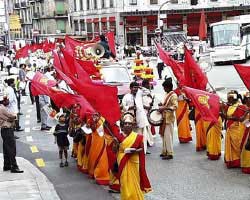 •
Muddling the Peace Process. Post-tsunami Rehabilitation in War-torn Sri
Lanka. Clingendael Conflict Research Unit (CRU) Policy Brief Report 2
January 2005, on how the twenty-year-old conflict in the country has
aggravated the impact of the tsunami and now hampers relief and rehabilitation
efforts. Also, there is a severe risk that the disaster and the ensuing
aid efforts will undermine Sri Lanka’s fragile peace process. The
policy brief outlines the challenges involved and offers recommendations
to the government, the Liberation Tigers of Tamil Eelam (LTTE) and the
donor community on dealing with humanitarian aid in a context of conflict.
Written by Dutch researchers Georg Frerks and Bart
Klem.
•
Muddling the Peace Process. Post-tsunami Rehabilitation in War-torn Sri
Lanka. Clingendael Conflict Research Unit (CRU) Policy Brief Report 2
January 2005, on how the twenty-year-old conflict in the country has
aggravated the impact of the tsunami and now hampers relief and rehabilitation
efforts. Also, there is a severe risk that the disaster and the ensuing
aid efforts will undermine Sri Lanka’s fragile peace process. The
policy brief outlines the challenges involved and offers recommendations
to the government, the Liberation Tigers of Tamil Eelam (LTTE) and the
donor community on dealing with humanitarian aid in a context of conflict.
Written by Dutch researchers Georg Frerks and Bart
Klem.
• Dilemmas of Civil Society Aid: Donors, NGOs and the Quest for Peace in Sri Lanka, by Camilla Orjuela, Dept. of Peace and Development Studies, Göteborg University. Peace and Democracy in South Asia (PDSA) January 2005.
• Transiting from Prolonged Conflict to Post Conflict Development: Locating the Case of Trincomalee District of Sri Lanka, by Anders Närman and Upali Vidanapathirana. Peace and Democracy in South Asia (PDSA) January 2005.
SASNET - Swedish South Asian Studies Network/Lund
University
Address: Scheelevägen 15 D, SE-223 70 Lund, Sweden
Phone: +46 46 222 73 40
Webmaster: Lars Eklund
Last updated
2011-01-19
